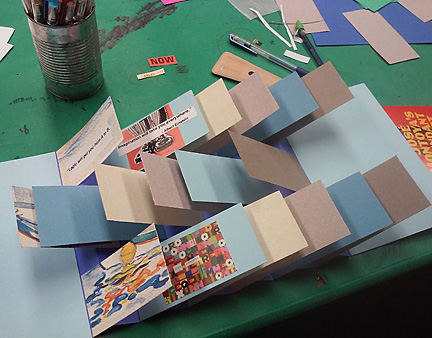Pushing the Envelope
Using the form of the envelope to create an artist’s book can be evocative, provocative, crafty, conceptual, fun, somber, expressive, “artistic”, creative, engaging, and baffling. As with many artists’ books, the question can be raised, “What are these for? What is their purpose? Are they meant to be read, observed and perused, handled, shown behind glass?” And in the case of the envelope book “…sent through the mail?”
I don’t presume to answer these questions, and can imagine another post which delves more deeply into them. In this one, my intent is to share a few of my own envelop books, the materials used in them, some of the motivation, thinking and feeling behind them, and let the observer draw their own conclusions, and perhaps becoming inpsired to explore, and even create one of their own.
Note: in this post, we see books created in the form of an envelope…as opposed to books created from existing envelopes, which is a whole other story. Also, hemp cord was used to bind the sewn books, and acid-free UHU glue sticks were used as the adhesive for anything glued on all the books depicted.

 Cutting, Folding, Stamping, Sewing…
Cutting, Folding, Stamping, Sewing…
In this book, the basic form is cut and folded, and a single signature is sewn into the last fold with a pamphlet stitch. A single rubber stamp image stamped in varying ways is used to develop and adorn the piece, and delicate handmade paper containing plant material adds a finishing touch to the pages.



 Lone Stories Connect…Discover “I Think I Can”…It’s Everything
Lone Stories Connect…Discover “I Think I Can”…It’s Everything
In the piece above, the basic structure is cut and folded from a sketchbook cover, and the pages created by a concertina/accordion folded paper strip glued into its next to last section.. The collaged elements, ranging from printed material cut from magazines, personal writing, repurposed corrugated paper, ribbon scrap and copied illustration images, tell a story of pain and isolation with the potential of redemption through connection and story.


 Painfully Animal
Painfully Animal
This mini book opens on four sides, with pages sewn in a single signature into one fold. Soft handmade paper is used both for adornment and pages, attached with a running stitch which is threaded back into the sewing holes so that the two ends can be tied together. The single message greets the viewer right in the center. What does it mean? Well, ponder it for awhile, and notice your associations with the phrase, “Painfully Animal”. What does the term evoke for You?


 Mixed Media Envelope Book: Work in Progress
Mixed Media Envelope Book: Work in Progress
This mixed media message piece has been underway, along with a number of bookish siblings, for over two years. It’s structure is cut and folded, like the first envelope book depicted in this post, and it’s graph paper pages stacked into a single signature, and sewn into the end fold with a running stitch as described above. The painstaking, step-by-step process of developing the book’s content requires time and focused attention.
Every bit of image and text must feel ‘right’ in how it looks, what it evokes and where it is placed in the book. The ‘story’ that emerges, however non-linear, is discovered in the doing as much by the artist, as it may be later by the observer. Time itself is one of the most significant materials used, as such a piece can’t be rushed.
In these works, many aspects of the creative process come into play: patience and impulse, technique and tension, methods and materials, effort and evocation.
The medium of the envelope book may be on a mission to become a missive to the outside world from the maker’s heart and soul, hands and head. If it gets a little heady, or crafty in-between, well, that might be just another aspect of this long strange trip we’re on.
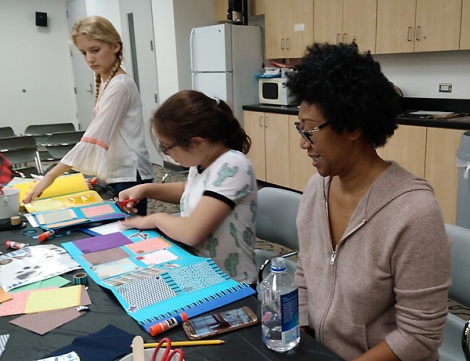 Play date at the Library with Mom!
Play date at the Library with Mom! The Mom above’s book…use of “scrap” (repurposed) paper…to colorful effect!
The Mom above’s book…use of “scrap” (repurposed) paper…to colorful effect!
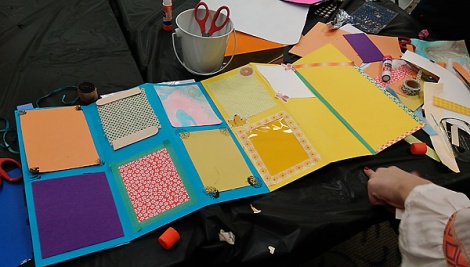
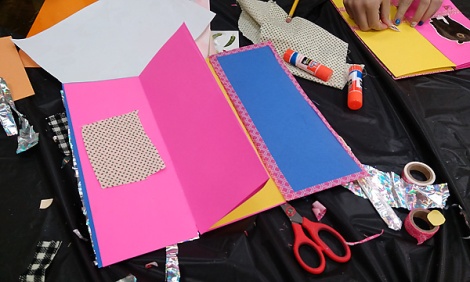

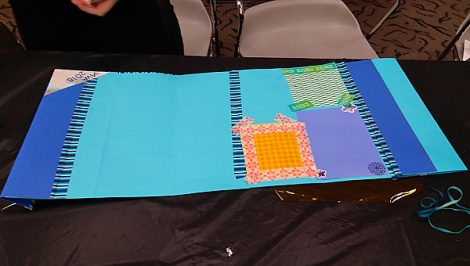 Young participants had a great time creating patchworks of color, shapes, patterns and textures on the accordion pages.
Young participants had a great time creating patchworks of color, shapes, patterns and textures on the accordion pages.
 Others had fun using rubber stamps!
Others had fun using rubber stamps!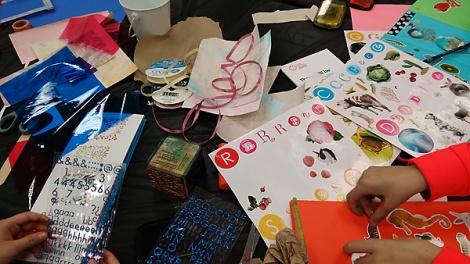 A material world…
A material world…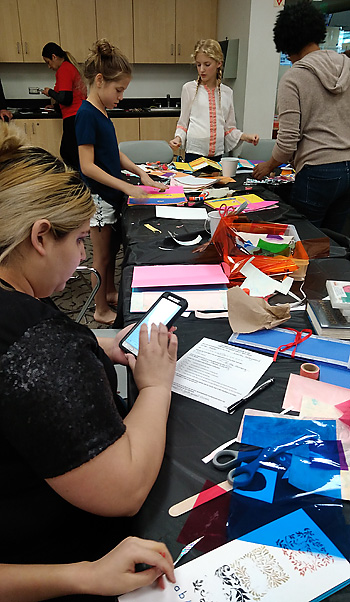
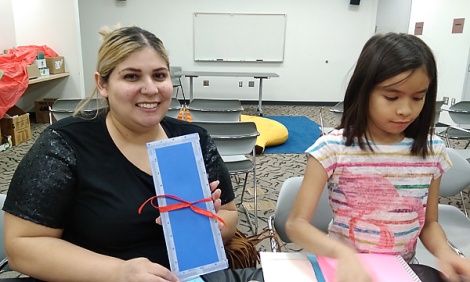 Another Mom gets into the act.
Another Mom gets into the act.
 Devoted Mom with her two beautiful little guys…
Devoted Mom with her two beautiful little guys…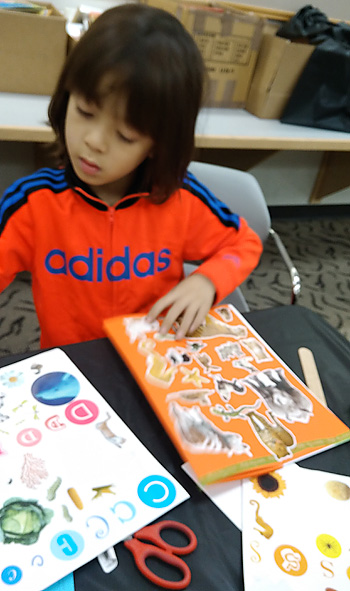 Focused..
Focused.. The lovely Ivonne of LACMA photographs a lovely accordion book!
The lovely Ivonne of LACMA photographs a lovely accordion book!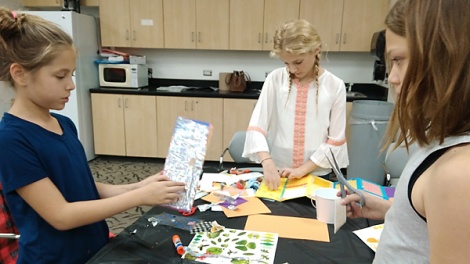
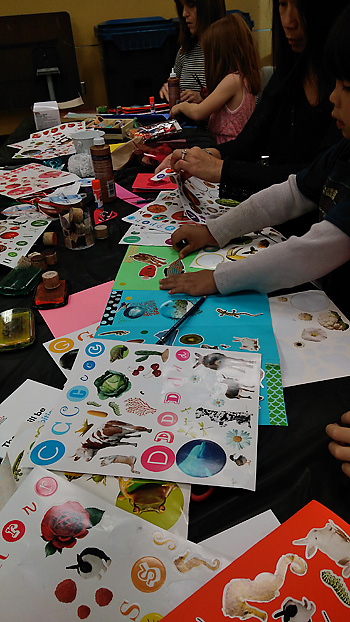
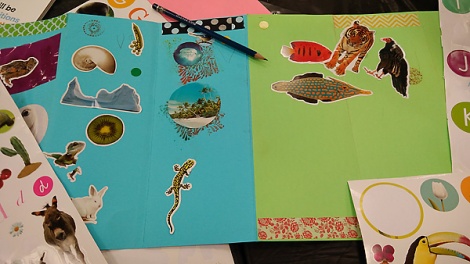



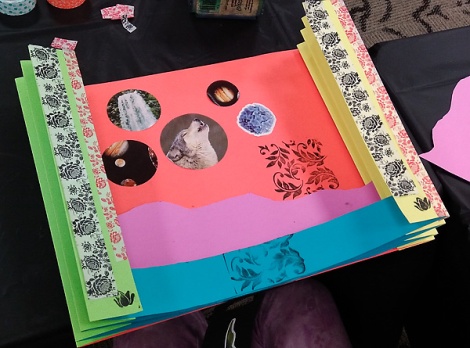 Fun use of stamping in different ways on the frame and backdrop if the book. What is the coyote howling at?
Fun use of stamping in different ways on the frame and backdrop if the book. What is the coyote howling at?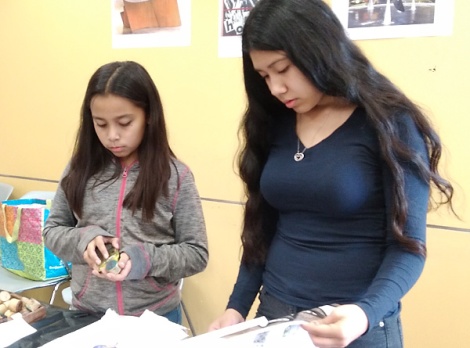 Sisters working side by side.
Sisters working side by side.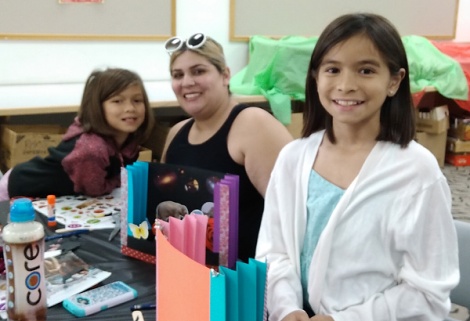 Smiling mom with her two daughters must be enjoying the creative break, and the opportunity to create side by side with them.
Smiling mom with her two daughters must be enjoying the creative break, and the opportunity to create side by side with them. Animals parade through flora under celestial bodies, all in primary technicolors!
Animals parade through flora under celestial bodies, all in primary technicolors! Wonderful use of trim….spanning on end of the “stage” to the other, with a butterfly attached!
Wonderful use of trim….spanning on end of the “stage” to the other, with a butterfly attached!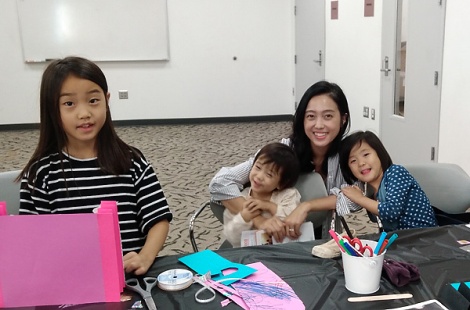 These four beauties created gorgeous pieces, with attention to detail, and total concentration!
These four beauties created gorgeous pieces, with attention to detail, and total concentration! Older sis…
Older sis… and younger (the middle child!).
and younger (the middle child!).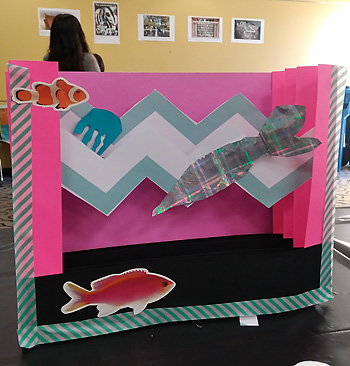 Great use of zig zags to create a sea life theme!
Great use of zig zags to create a sea life theme!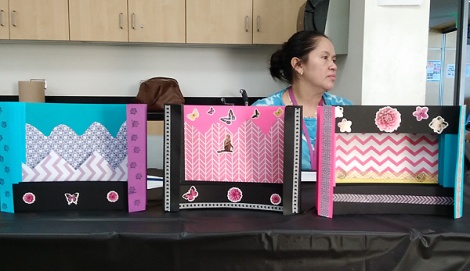 A line-up of works in from of Mom.
A line-up of works in from of Mom.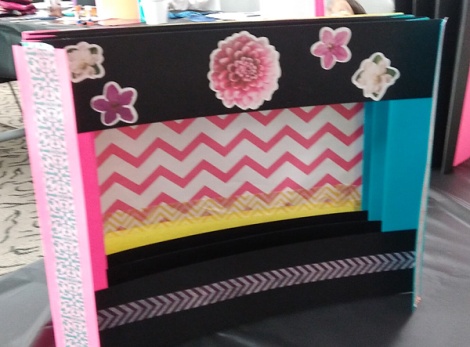
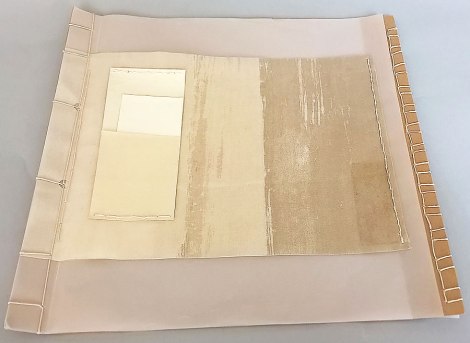
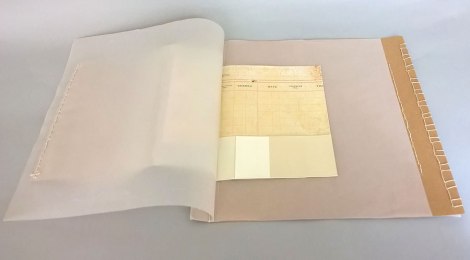
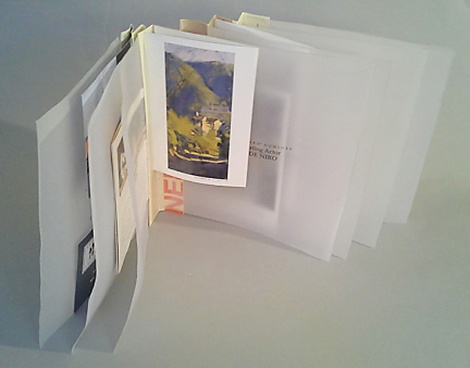 “Folded fan” flag book, repurposed brochure, vellum (?), photo corners, brochures and postcards.
“Folded fan” flag book, repurposed brochure, vellum (?), photo corners, brochures and postcards.






